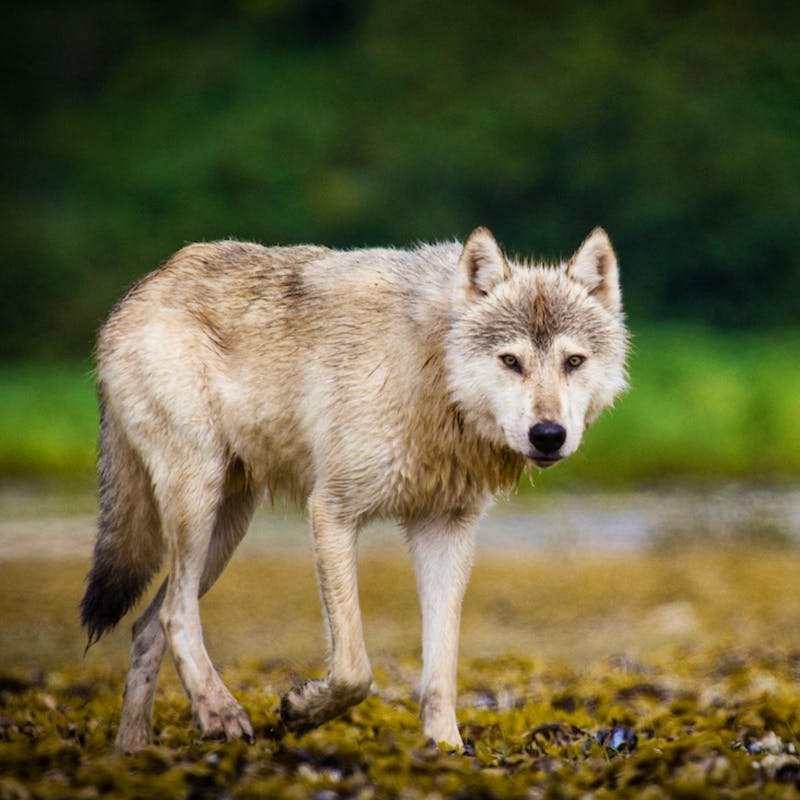FOR IMMEDIATE RELEASE
February 11, 2015
Contact: Courtney Sexton, 202.772.0253, csexton@defenders.org
TUCSON, Ariz. — The U.S. Fish and Wildlife Service (Service) today confirmed through DNA analysis that the endangered gray wolf shot dead in Utah was indeed the lone female recently made famous for her journey of hundreds of miles from the Northern Rockies to the Grand Canyon. The wandering wolf was killed earlier this month by a hunter who reportedly mistook her for a coyote.
The following is a statement from Eva Sargent, Director of Southwest Programs, Defenders of Wildlife:
“It is nothing short of a tragedy that this wolf’s journey across the west was cut short because she was shot and killed by a coyote hunter. This brave and ambitious female gray wolf that made it all the way from the Wyoming to the Grand Canyon had already become a symbol of what gray wolf recovery should look like – animals naturally dispersing to find suitable habitat.
“Unfortunately, we have seen time and again that coyote hunting in habitat frequented by wolves is deadly for wolves. Sadly, with the U.S. Fish and Wildlife Service preparing to remove all protections for gray wolves, except for Mexican gray wolves, in the near future, it will become harder and harder for wolves to travel safely, and less and less likely that we will hear their howls echo through places like the Grand Canyon, which holds some of their ancestors’ most favored habitat.”
Background:
In late November the U.S. Fish and Wildlife Service confirmed that the “wolf-like animal” seen near the North Rim of the Grand Canyon earlier that month was in fact a gray wolf from the Rocky Mountains. The wolf was identified as female “914F” collared near Cody, Wyoming.
Wolves from the north and south historically met, interbred and thrived in the Grand Canyon ecoregion and the Southern Rockies. There were once up to two million gray wolves living in North America, but the animals were driven to near-extinction in the lower-48 states by the early 1900s. After passage of the federal Endangered Species Act in 1973 and protection of the wolf as endangered, federal recovery programs resulted in the rebound of wolf populations in limited parts of the country. Roughly 5,500 wolves now live in the lower-48 states, but today, the species only occupies approximately 36 percent of their suitable range – remaining absent from huge swaths of wilderness that provide excellent habitat but are missing wolves as an essential component of ecosystem function. Places like the Grand Canyon ecoregion, Olympic Peninsula in Washington, western Oregon, much of western Colorado, northern California and parts of Utah could all be a home to wolves once again, bringing both ecological and economic benefits to local communities. Habitats in the Grand Canyon ecoregion and Southern Rockies are vital especially to the recovery of the Mexican gray wolf, which once roamed widely in the Southwestern U.S. but is now one of the most endangered wolves in the world.
Wolves are an iconic, native species that play a vital role in restoring healthy ecosystems by keeping prey species in balance. In 2013, the Service proposed a federal delisting of gray wolves across the country. In the event of such a delisting, management of wolves would be determined by individual states. Wolves are still not recovered in significant portions of their range and are not secure in areas of the country where they have already been delisted. Aggressive hunting, trapping and lethal control in Idaho, Montana and Wyoming are undermining the progress made since wolves were reintroduced in the Northern Rockies in 1995.
###
Defenders of Wildlife is dedicated to the protection of all native animals and plants in their natural communities. With more than 1.1 million members and activists, Defenders of Wildlife is a leading advocate for innovative solutions to safeguard our wildlife heritage for generations to come. For more information, visit www.defenders.org and follow us on Twitter @DefendersNews.
For over 75 years, Defenders of Wildlife has remained dedicated to protecting all native animals and plants in their natural communities. With a nationwide network of nearly 2.1 million members and supporters, Defenders of Wildlife is a leading advocate for innovative solutions to safeguard our wildlife for generations to come. To learn more, please visit https://defenders.org/newsroom or follow us on X @Defenders.
News

ESA Amendments Act Poses a Historic Threat to America’s Wildlife

